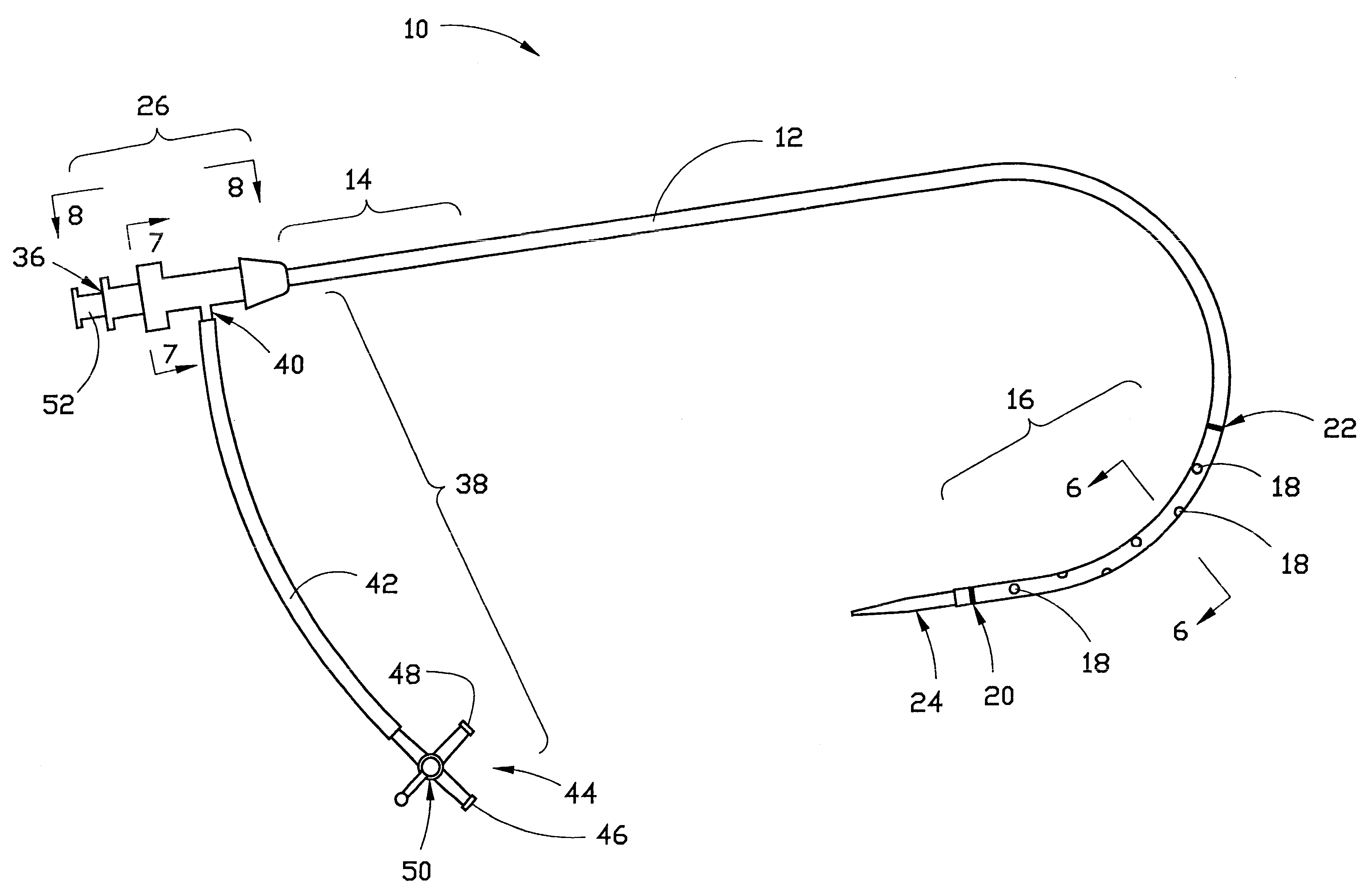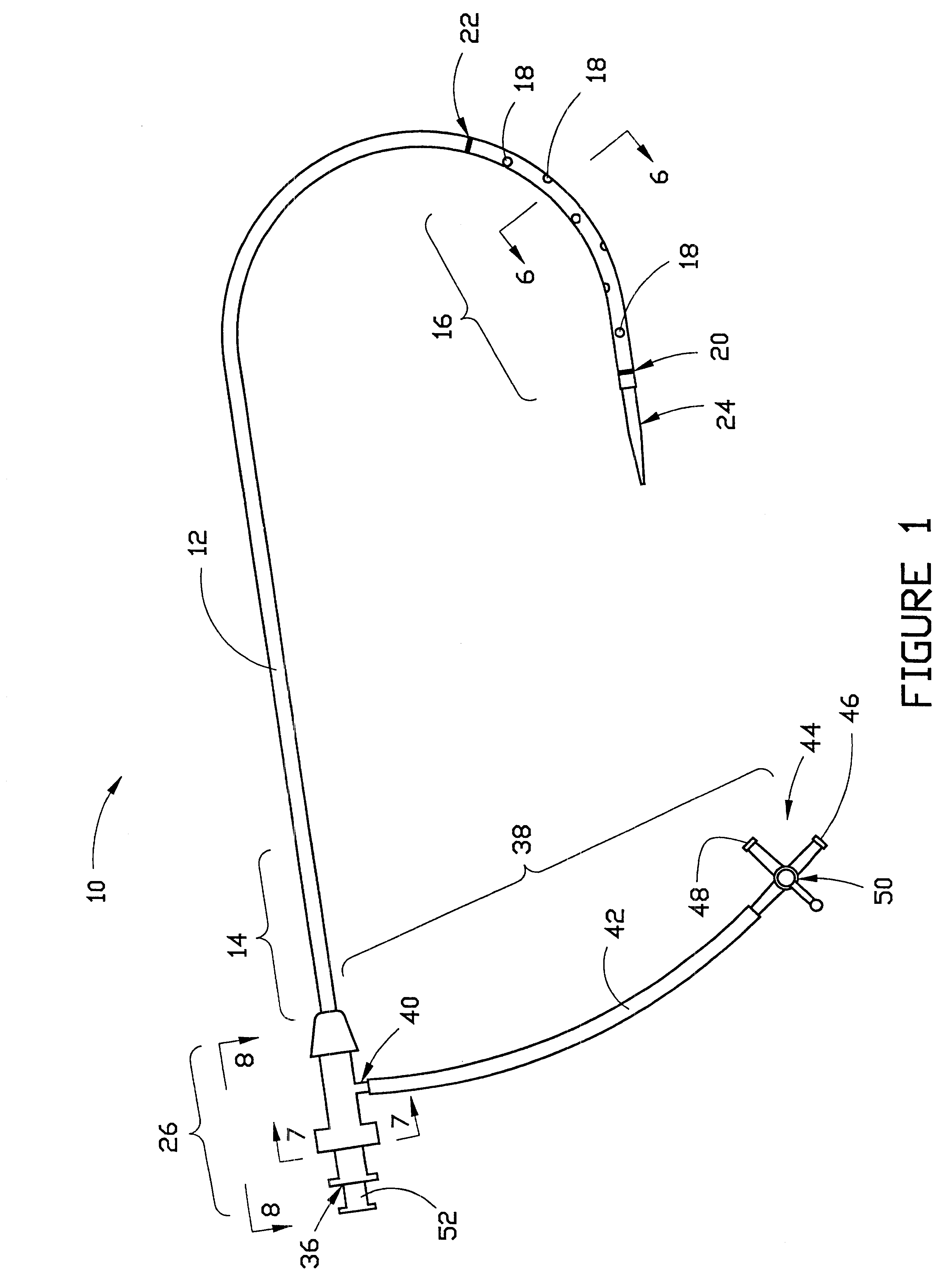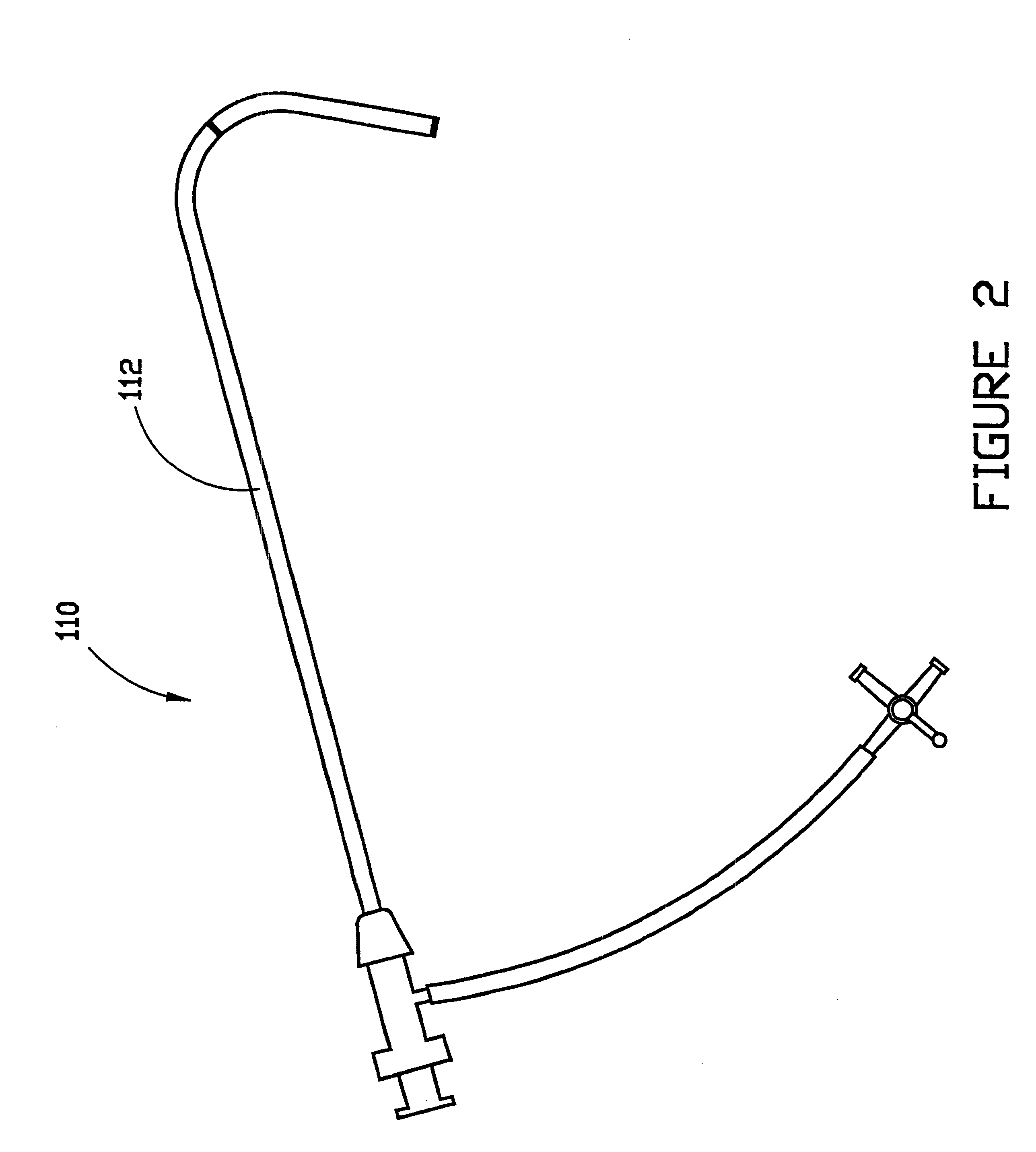Method for treating a cardiovascular condition
a cardiovascular condition and treatment method technology, applied in the field of cardiovascular condition treatment, can solve the problems of insufficient introduction of contrast agents, tissue damage, and the sheath itself may not serve as the conduit,
- Summary
- Abstract
- Description
- Claims
- Application Information
AI Technical Summary
Benefits of technology
Problems solved by technology
Method used
Image
Examples
second embodiment
Preferably, side port 38 of hub 26 is adapted to rotate about the long axis of tube 12. This may be accomplished in several ways, three of which are illustrated in FIGS. 8, 9 and 10-11. As shown in FIG. 8, attachment member 28A and secondary hub portion 29A may be fixed together, and attachment member 28A may be adapted for rotation about tube 12 between flared portion 30 and shoulder 32. FIG. 9 illustrates the hub, in which attachment member 28B is provided with an annular lip 60 at its lower end (as shown in FIG. 9), and retaining ring 61. Secondary hub portion 29B is also provided with an annular lip 62 at its upper end (as shown in FIG. 9) that may be retained within attachment member 28B and between its lip 60 and its retaining ring 61 so that side port 38 of the hub may rotate about axis 35 that extends generally along the length of the tube. Gasket 64 may be interposed between lip 60 of attachment member 28B and lip 62 of secondary hub portion 29B in order to seal the hub ass...
third embodiment
FIGS. 10 and 11 illustrate the hub which employs a Touhy-Borst type sealing mechanism. In this embodiment, secondary hub portion 29C is connected to attachment member 28B in the same manner as in the embodiment of FIG. 9 so that side port 38 of the hub may rotate about axis 35. Secondary hub portion 29C includes inner component 66 and outer component 68. Inner component 66 is externally threaded with threads 70. Outer component 68 is internally threaded with threads 72, which are adapted to mate with threads 70. Outer component 68 also includes inner cylinder 74, which is hollow and opens at its outer end into end port 36. Inner cylinder 74 is also internally threaded with threads 54 that are adapted to mate with terminus 52 of the dilator. At the inner end of cylinder 74 is washer 76, a generally rigid, circular washer having a central hole therethrough. Cylinder 74 of outer component 68 is adapted to move axially, as the outer component is threaded onto the inner component, into r...
PUM
 Login to View More
Login to View More Abstract
Description
Claims
Application Information
 Login to View More
Login to View More - R&D
- Intellectual Property
- Life Sciences
- Materials
- Tech Scout
- Unparalleled Data Quality
- Higher Quality Content
- 60% Fewer Hallucinations
Browse by: Latest US Patents, China's latest patents, Technical Efficacy Thesaurus, Application Domain, Technology Topic, Popular Technical Reports.
© 2025 PatSnap. All rights reserved.Legal|Privacy policy|Modern Slavery Act Transparency Statement|Sitemap|About US| Contact US: help@patsnap.com



